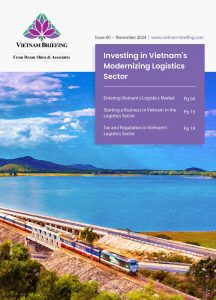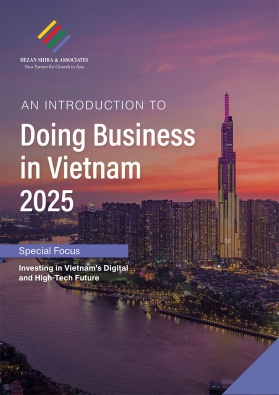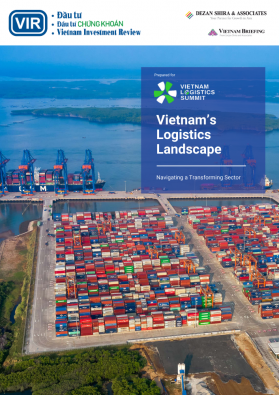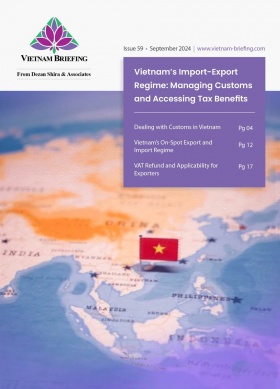Vietnam’s Economic Outlook for 2025: Push for Digitalization and Sustainability
Vietnam’s economic outlook for 2025 is highly positive, and industries primed for investment-led growth include manufacturing, technology, retail, and renewables. The country surpassed all socio-economic targets set by the National Assembly for 2024, with GDP growth exceeding 7 percent. This strong performance lays the groundwork for continued momentum in 2025, as Vietnam intensifies efforts to advance digitalization and accelerate its green transition.
Vietnam GDP projections for 2025
As the new year begins, Vietnam stands out with optimistic growth projections from both domestic and international organizations. In October last year, HSBC economists predicted that Vietnam would achieve the highest GDP growth among the six largest Southeast Asian economies in 2025. This outlook is driven by strong foreign investment, robust exports, and improving domestic demand. HSBC projected a GDP growth rate of 6.5 percent for Vietnam, slightly outpacing the Philippines, which is expected to grow by 6.4 percent.
|
Forecast of ASEAN-6’s GDP Growth in 2025 |
|
|
Country |
GDP growth (%, y-o-y) |
|
Vietnam |
6.5 |
|
Philippines |
6.4 |
|
Indonesia |
5.3 |
|
Malaysia |
4.6 |
|
Singapore |
2.6 |
|
Thailand |
3.1 |
|
Source: CEIC/HSBC |
|
Other organizations have issued even more optimistic forecasts for Vietnam’s economic growth in 2025. United Overseas Bank (UOB) has raised its GDP growth projection from 6 percent to 7 percent, while the Vietnam Institute for Economic and Policy Research (VEPR) forecasts an even higher growth rate of 7.5 to 8 percent.
Vietnam’s economic outlook in 2025 and beyond
If Vietnam sustains its strong growth trajectory, experts predict an impressive economic expansion for the country in coming years. According to the UK-based Centre for Economics and Business Research (CEBR), Vietnam’s GDP is expected to surpass that of Singapore, with an average annual growth rate of 5.8 percent over the next five years, reaching US$676 billion by 2029. By 2039, Vietnam’s GDP could grow to US$1.41 trillion, positioning it as the 25th largest economy globally and the third-largest in Southeast Asia, after Indonesia and Thailand.
Additionally, CEBR projects that Vietnam’s growth will outpace regional peers, such as Thailand, Malaysia, and Singapore. While global GDP is forecast to rise from US$110 trillion in 2024 to US$221 trillion by 2039, Vietnam is poised to surpass several ASEAN economies in terms of growth.
Vietnam is Asia’s leading economy in advancing the dual transition of digitalization and sustainability
Countries around the world are increasingly positioning digital transformation and green transition as key drivers of sustainability and long-term growth. This combined effort, known as the dual transition, is emerging as a strategic growth trend for global economies.
In a report released in December 2024, experts from HSBC Vietnam’s Markets and Securities Services highlighted that Vietnam has become the most proactive country in both Asia and globally in advancing the dual transition. The country’s commitment is reflected in two pivotal plans: the National Strategy for Digital Economy and Digital Society Development (2025 with a vision to 2030) and the National Green Growth Strategy for 2021-2030 (with a vision to 2050).
Experts emphasize that Vietnam is uniquely positioned to successfully implement the dual transition, bolstered by favorable demographic factors, including a population of over 100 million, with 70 percent of it in the workforce. Prioritizing digital literacy will further enhance these strengths, positioning Vietnam for continued success in its transformation.
By 2025, the local digital economy is expected to scale to US$52 billion. Digital economy sub-sectors such as e-commerce, digital banking, and online gaming are nascent and high-growth areas which will be highly attractive for investors. – Marco Förster, ASEAN Director at Dezan Shira & Associates
Building a digital economy
Vietnam’s National Digital Transformation Program is set to significantly improve the country’s economic digital transformation. By 2025, per an HSBC report, Vietnam aims to achieve several key milestones, including having the digital economy contribute 25 percent to GDP and ensuring that green credit accounts for 10 percent of total outstanding debts.
In response to various government’s initiatives, businesses across Vietnam are undergoing restructuring and widely integrating technology. The Enterprise Development Agency, part of the Ministry of Planning and Investment, reports that as of 2023, 47 percent of businesses in Vietnam had implemented some form of digital transformation. By 2024, nearly 80 percent of Vietnam’s population was expected to have internet access, with smartphone ownership doubling compared to a decade ago.
Vietnam is among the fastest-growing economies in the ASEAN region, experiencing a remarkable 16 percent growth, as noted in Google’s e-Conomy report. With its gross merchandise value (GMV) increasing, Vietnam is on track to become the second-largest digital market in the region by 2030.
Incentives for promoting the growth of digital technology
In August 2024, the Ministry of Information and Communications (MIC) convened a working session with relevant ministries and agencies to gather feedback on the draft Law on the Digital Technology Industry before its submission to the Government and National Assembly. The proposed law seeks to foster sector growth and address existing regulatory gaps.
The draft emphasizes the need for strong investment incentives, including streamlined procedures and favorable tax policies, to encourage development and expansion within the digital technology sector.
Among the proposals is creating a mechanism for experimental licensing, which would promote innovative approaches in developing digital technologies. Additionally, the draft suggests establishing ‘digital technology zones’ that would operate under the same legal framework as industrial parks and economic zones.
Achieving sustainable growth
Vietnam is making strides in implementing its net zero transition plans, raising awareness among local businesses about the government’s sustainability commitments. According to a 2024 survey conducted by the Vietnamese Government’s Private Economic Development Research Board, 48.7 percent of businesses identified the transition as critical to their operations.
Moreover, Vietnam’s renewable energy potential is vast. As the most naturally suited country in Southeast Asia for wind and solar energy development, Vietnam ranks second among developing countries in attracting foreign direct investment (FDI) in the renewable energy space.
Incentives for green energy development
The Ministry of Industry and Trade has proposed incentives to attract investments in renewable energy through a draft decree implementing the Law on Electricity, now open for public comment.
Key proposals include exempting marine area use fees during offshore wind power construction and reducing these fees by 50 percent for 12 years post-operation. Vietnam aims to achieve 6,000 MW of offshore wind power by 2030 and 30,000 to 50,000 MW by 2050, aspiring to become a Southeast Asian offshore wind power hub, although no projects are currently operational.
The draft sets criteria for foreign investors, requiring them to have experience with similar-scale projects and sufficient net assets while limiting their ownership to less than 65 percent of joint ventures.
Incentives are also proposed for solar and wind projects with storage systems connected to the national grid, as well as for green hydrogen and ammonia projects.
Vietnam’s prioritized industries from 2025 onward
According to the Industrial Development Strategy through 2025, vision to 2035, introduced on June 9, 2014, Vietnam’s government has selected three groups of industries as development priorities. These sectors include:
- Processing and manufacturing industries;
- Electronics and telecommunication industries; and
- New energy and renewable energy industries.
|
Industrial segment |
Through 2025 |
After 2025 |
|
Processing and manufacturing industries |
||
|
Mechanical engineering and metallurgy |
|
|
|
Chemicals |
|
|
|
Agricultural, forestry, and fishery processing |
|
|
|
Garments, textile, leather, and footwear |
|
|
|
Electronics and telecommunications industries |
|
|
|
New energy and renewable energy industries |
|
|
Investment prospects in Vietnam for 2025
Given the current market trends and the government’s strategic targets, prospective investors will find numerous opportunities across various sectors in Vietnam in 2025.
Banking and finance
According to a note from VinaCapital, the banking sector is expected to perform strongly in 2025. Earnings growth for the sector is projected to increase from 14 percent in 2024 to 17 percent in 2025. This shift is attributed to the main drivers of Vietnam’s GDP growth transitioning from exports and tourism in 2024 to focusing on consumption, infrastructure spending, and real estate in 2025.
Retail and e-commerce
Vietnam’s retail e-commerce market is projected to exceed US$25 billion in 2024, reflecting a 20 percent increase from the previous year. The country’s e-commerce sector continues to experience strong growth rates, ranging from 18 to 25 percent annually. Currently, retail e-commerce accounts for approximately 9 percent of Vietnam’s total retail sales and consumer service revenue.
According to the Ministry of Industry and Trade (MoIT), total revenue in the e-commerce sector is expected to reach US$35 billion by 2025. The MoIT also aims to raise the percentage of the population engaged in online shopping and cashless payments to 55 percent and 50 percent, respectively.
Education and training
In early January 2025, Vietnam’s Deputy Prime Minister Le Thanh Long signed a decision approving the National Education Development Strategy through 2030, with a vision for 2045. The strategy aims to ensure that Vietnam’s education sector meets advanced Asian standards within 5 years and global standards within 10 years.
Promulgated under Decision No. 1705/QD-TTg, the strategy’s objectives include modernizing Vietnam’s education system, building upon and enhancing the nation’s strong traditions, adopting global influences, fostering the comprehensive development of Vietnamese citizens, and meeting the socio-economic demands of the new era. The government’s commitment presents significant opportunities for investment in this sector.
Infrastructure and logistics development
During his remarks at the Vietnam Logistics Forum 2024 on December 2, Prime Minister Pham Minh Chinh emphasized Vietnam’s goal of enhancing its logistics infrastructure to achieve double-digit growth in the sector by 2025.
The business community in Vietnam’s logistics industry is optimistic about growth prospects for 2025. A survey conducted by Vietnam Report JSC revealed that nearly 42 percent of companies have a more positive outlook for their business.
Despite ongoing improvements, Vietnam’s logistics infrastructure still faces significant challenges, including congested ports, inadequate road networks, and limited air cargo facilities. However, these obstacles also present lucrative opportunities for investors and developers.
Manufacturing
Vietnam’s manufacturing sector was projected to reach US$109.90 billion in value added by 2024, growing at a rate of 8.78 percent. The sector has attracted around US$261.4 billion in FDI and continues to draw interest from major tech companies like Samsung, Microsoft, Intel, and LG. Additionally, firms such as Foxconn and Pegatron are expanding in the country, with Apple and Nvidia pledging investments.
Value added in Vietnam’s manufacturing market is projected to reach US$108.7 billion by 2025, at a compound annual growth rate of 3.33 percent from 2025 to 2029.
Vietnam’s strategic location and labor costs, approximately 50 percent lower than China’s, make it a prime destination for international relocation. Enhanced by government tax incentives and trade agreements like the CPTPP and EVFTA, Vietnam is becoming an increasingly attractive manufacturing hub for global enterprises.
For further information, see: Vietnam Manufacturing Tracker: 2024-25
Renewable energy
According to S&P Global, as Vietnam expects a substantial rise in electricity demand, estimated to reach 12-13 percent by 2025, the nation is concurrently seeing a boost in investments in renewable energy. This increasing demand has led to a surge in foreign investments into Vietnam’s clean energy sector. Several global companies are entering the market, enticed by the country’s supportive investment environment and dedication to renewable energy initiatives.
Conclusion
Vietnam’s economic outlook for 2025 reflects a promising trajectory driven by strong GDP growth, supported by digitalization and a commitment to sustainability. With forecasts predicting significant economic expansion and the successful implementation of its dual transition strategies, Vietnam is well-positioned to emerge as a leading economy in Southeast Asia.
The focus on enhancing digital literacy and expanding the digital economy further indicates the country’s potential for attracting investment and fostering innovation in the coming years.
About Us
Vietnam Briefing is one of five regional publications under the Asia Briefing brand. It is supported by Dezan Shira & Associates, a pan-Asia, multi-disciplinary professional services firm that assists foreign investors throughout Asia, including through offices in Hanoi, Ho Chi Minh City, and Da Nang in Vietnam. Dezan Shira & Associates also maintains offices or has alliance partners assisting foreign investors in China, Hong Kong SAR, Indonesia, Singapore, Malaysia, Mongolia, Dubai (UAE), Japan, South Korea, Nepal, The Philippines, Sri Lanka, Thailand, Italy, Germany, Bangladesh, Australia, United States, and United Kingdom and Ireland.
For a complimentary subscription to Vietnam Briefing’s content products, please click here. For support with establishing a business in Vietnam or for assistance in analyzing and entering markets, please contact the firm at vietnam@dezshira.com or visit us at www.dezshira.com
- Previous Article Vietnam Proposes Major Government Restructuring to Streamline Bureaucracy
- Next Article Vietnam’s Trade Performance in 2024: How to Read the Data










